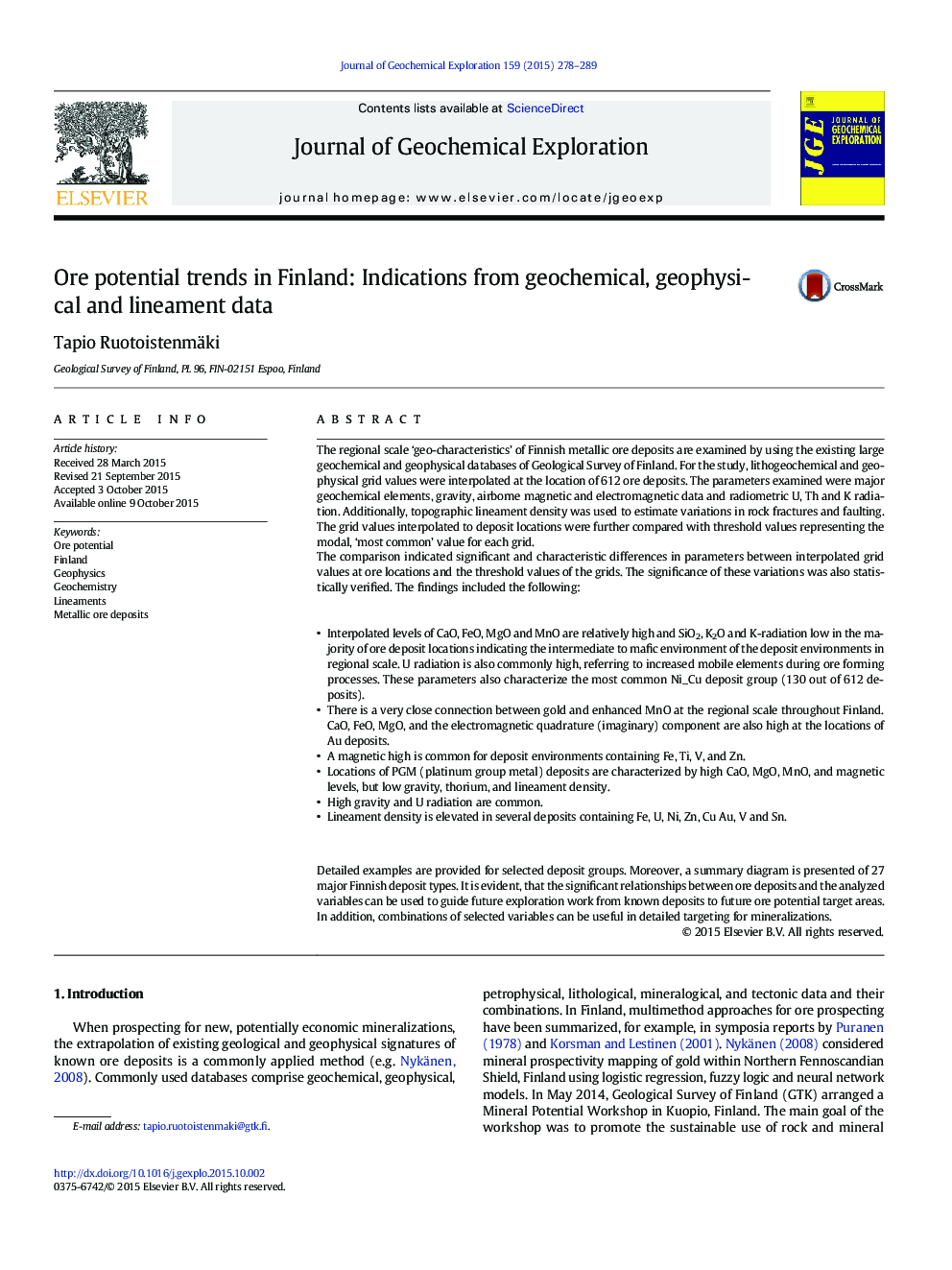| کد مقاله | کد نشریه | سال انتشار | مقاله انگلیسی | نسخه تمام متن |
|---|---|---|---|---|
| 4457068 | 1620900 | 2015 | 12 صفحه PDF | دانلود رایگان |
• Introducing regional scale ‘geo-characteristics’ of 612 Finnish metallic ore deposits
• High CaO, FeO, MgO, MnO and low SiO2 and K2O are common in deposits environments.
• U-radiation is most common geophysical parameter indicating ore deposits.
• Lineaments correlate with deposits containing Fe, U, Ni, Zn, Cu Au, V and Sn.
• Points out effective parameter combinations and trends for ore prospecting
The regional scale ‘geo-characteristics’ of Finnish metallic ore deposits are examined by using the existing large geochemical and geophysical databases of Geological Survey of Finland. For the study, lithogeochemical and geophysical grid values were interpolated at the location of 612 ore deposits. The parameters examined were major geochemical elements, gravity, airborne magnetic and electromagnetic data and radiometric U, Th and K radiation. Additionally, topographic lineament density was used to estimate variations in rock fractures and faulting. The grid values interpolated to deposit locations were further compared with threshold values representing the modal, ‘most common’ value for each grid.The comparison indicated significant and characteristic differences in parameters between interpolated grid values at ore locations and the threshold values of the grids. The significance of these variations was also statistically verified. The findings included the following:
• Interpolated levels of CaO, FeO, MgO and MnO are relatively high and SiO2, K2O and K-radiation low in the majority of ore deposit locations indicating the intermediate to mafic environment of the deposit environments in regional scale. U radiation is also commonly high, referring to increased mobile elements during ore forming processes. These parameters also characterize the most common Ni_Cu deposit group (130 out of 612 deposits).
• There is a very close connection between gold and enhanced MnO at the regional scale throughout Finland. CaO, FeO, MgO, and the electromagnetic quadrature (imaginary) component are also high at the locations of Au deposits.
• A magnetic high is common for deposit environments containing Fe, Ti, V, and Zn.
• Locations of PGM (platinum group metal) deposits are characterized by high CaO, MgO, MnO, and magnetic levels, but low gravity, thorium, and lineament density.
• High gravity and U radiation are common.
• Lineament density is elevated in several deposits containing Fe, U, Ni, Zn, Cu Au, V and Sn.Detailed examples are provided for selected deposit groups. Moreover, a summary diagram is presented of 27 major Finnish deposit types. It is evident, that the significant relationships between ore deposits and the analyzed variables can be used to guide future exploration work from known deposits to future ore potential target areas. In addition, combinations of selected variables can be useful in detailed targeting for mineralizations.
Figure optionsDownload as PowerPoint slide
Journal: Journal of Geochemical Exploration - Volume 159, December 2015, Pages 278–289
